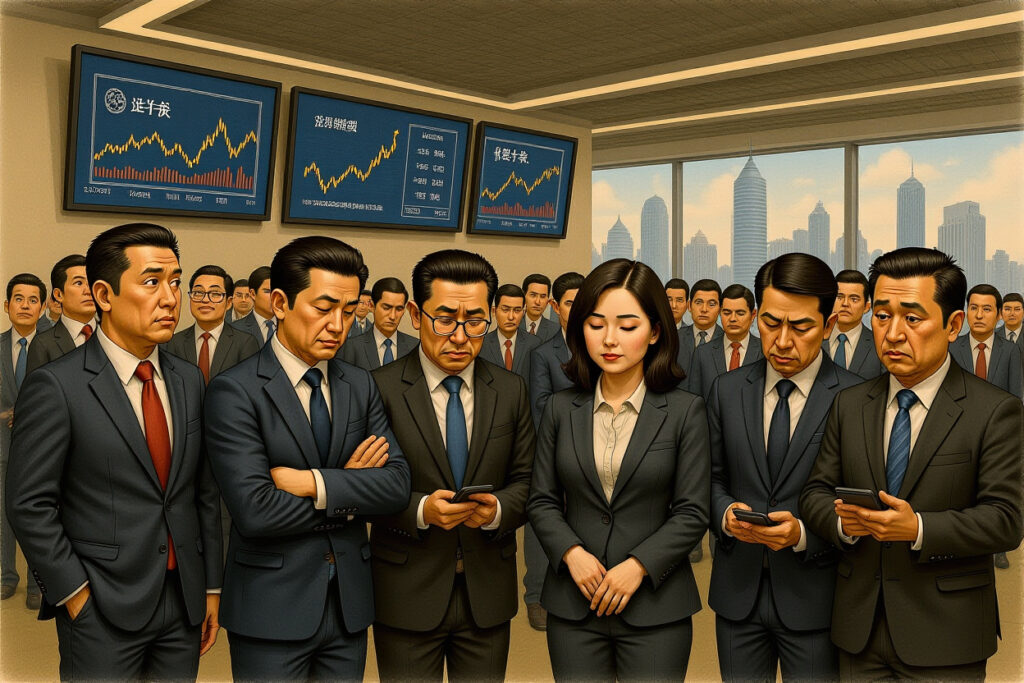Hong Kong Market Rallies as Major Indices Hit Multi-Year Highs
The Hong Kong stock market is witnessing a significant uptrend, with the Hang Seng Index rising by 1.19% and briefly surpassing the 26,000-point mark, a near four-year high. This surge follows a period of consolidation around the 25,000-point level, indicating renewed investor confidence and bullish momentum.
Post-earnings season, tech giants like Tencent and Alibaba have seen sustained price increases. Alibaba, in particular, has been aggressive in both retail and AI sectors, driving broader market optimism. The Hang Seng Tech ETF (513010) and the Hong Kong Stock Connect Internet ETF (513040) rose by 0.88% and 1.39%, respectively, reflecting strong investor interest in technology and internet stocks.
Improved liquidity conditions, easing profit pressures for tech companies, and rising trading volumes suggest that the Hong Kong market is poised for further gains, potentially exceeding its early-year peaks.
Key Drivers Behind the Market Surge
Several factors are contributing to the current rally in Hong Kong stocks. Let’s break down the most influential elements.
Tech and Internet Stocks Lead the Charge
Large-cap tech stocks are experiencing a robust rebound. Alibaba-W surged by 3.35%, JD.com by 3.32%, Xiaomi Group-W by 2.65%, and Tencent Holdings by 1.54%. Tencent’s stock price reached a yearly high of HK$627 per share, while Alibaba’s stock approached its annual peak, trading above HK$140 per share.
Alibaba’s upcoming announcement on September 10 regarding significant business adjustments—including the revival of Koubei and integration with Amap’s group-buying services—is generating excitement. This move aims to reshape the local lifestyle services sector, directly competing with giants like Meituan. Additionally, Alibaba’s advancements in AI, such as the release of the Qwen3-Max-Preview model with 1T parameters, underscore its commitment to innovation.
Sector-Specific Performances
Other sectors are also showing strength:
– Internet healthcare stocks rose sharply, with Ali Health up 10.02% and JD Health up 6.42%. This follows draft guidelines from China’s National Medical Products Administration on prescription drug sales online.
– Property and management stocks rebounded, with Country Garden surging 27.45%, Longfor Group up 6.06%, and China Vanke up 3.58%. Recent policy relaxations in cities like Shenzhen have buoyed sentiment.
– Gold-related stocks gained momentum as spot gold prices exceeded $3,650 per ounce. Chifeng Gold rose 11.55%, and Zijin Mining Group climbed 10.18%.
Liquidity Improvements and Global Factors
The Hong Kong market is benefiting from favorable liquidity conditions and global monetary policy shifts.
Federal Reserve’s Dovish Stance
Federal Reserve Chair Jerome Powell’s recent dovish comments have heightened expectations for interest rate cuts. Market probabilities suggest a near-certainty of rate reductions in September, with a 73% chance of cumulative cuts reaching 75 basis points by year-end. For emerging markets like Hong Kong, this could mean increased foreign capital inflows, driving further gains.
Local Liquidity Measures
The Hong Kong Monetary Authority has actively managed liquidity by absorbing Hong Kong dollar supplies and stabilizing interbank rates. The Hong Kong Interbank Offered Rate (Hibor) has stabilized, and the USD/HKD exchange rate remains steady at 7.79, away from the weak-side convertibility guarantee. These measures provide a stable foundation for market growth.
Market Phases and Structural Trends
The Hong Kong market has evolved through three distinct phases this year, each driven by different factors.
Phase 1: AI-Driven Rally (January–March)
The Hang Seng Tech Index outperformed global indices, fueled by AI enthusiasm and breakthroughs from tech companies. This period set the stage for the current rally.
– Tech stocks led gains, with investors flocking to AI-related opportunities.
– The Hang Seng Index reached阶段性 highs, reflecting optimism about technological innovation.
Phase 2: U.S. Market Leadership (April–June)
While U.S. stocks, particularly tech giants, surged due to strong earnings, Hong Kong markets lagged. The Hang Seng Tech Index struggled to reclaim its March highs, highlighting relative weakness.
– Tariff policies and global uncertainties impacted performance.
– Hong Kong’s internet giants faced profit pressures, which were largely priced in by investors.
Phase 3: Liquidity-Driven Rebound (July–Present)
A-shares outperformed Hong Kong and U.S. markets, driven by liquidity injections and科创 sector enthusiasm. Hong Kong stocks entered a consolidation phase, with structural opportunities emerging.
– Earnings season provided clarity, with companies like Alibaba and Tencent showcasing AI progress.
– ETF inflows surged, highlighting retail and institutional interest.
Investment Opportunities via ETFs
For investors seeking exposure to Hong Kong’s rally, ETFs offer a efficient and accessible route.
Hang Seng Tech ETF (513010)
This ETF provides diversified exposure to China’s tech core assets, covering AI产业链的上中下游. It has attracted HK$77.27 billion in inflows year-to-date, making it a popular choice for investors betting on tech growth.
Hong Kong Stock Connect Internet ETF (513040)
Focused on internet platform economies, this ETF includes heavyweights like Tencent, Alibaba, Xiaomi, and Meituan. Its top three holdings account for over 41% of the portfolio, offering high concentration and elasticity. It has seen net inflows of HK$18.07 billion this year.
Both ETFs support T+0 trading, providing liquidity and flexibility for investors looking to capitalize on short-term movements or long-term trends.
Future Outlook and Strategic Insights
The convergence of supportive policies, AI advancements, and liquidity improvements suggests sustained growth for Hong Kong stocks.
– Valuation discounts: The Hang Seng Tech Index’s市盈率 of 22.19x and the Hong Kong Stock Connect Internet Index’s 23.91x are below historical averages and global peers like the Nasdaq.
– AI penetration: As AI costs decline and adoption accelerates, tech companies could see further revaluation.
– Capital inflows: Southbound funds have maintained net purchases, with year-to-date inflows reaching HK$1.03 trillion, exceeding 127% of 2024’s total projections.
Investors should monitor Federal Reserve policies, Chinese regulatory developments, and corporate earnings for cues. ETFs like 513010 and 513040 remain strategic tools for tapping into this momentum.
Capitalizing on Hong Kong’s Growth Story
The Hong Kong market’s rally is backed by solid fundamentals, improving liquidity, and technological innovation. With trillion-dollar capital inflows driving gains, now is an opportune time to evaluate exposure to this dynamic market. Whether through direct stock purchases or ETFs, investors can position themselves to benefit from the ongoing transformation. Stay informed, diversify strategically, and consider leveraging ETFs for efficient access to Hong Kong’s brightest opportunities.




